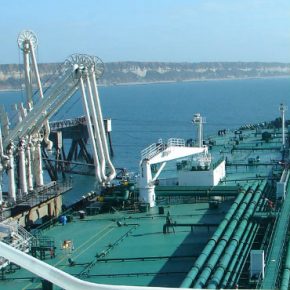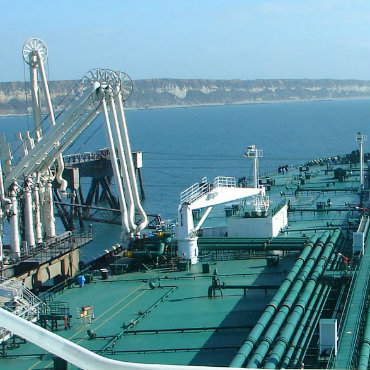Tydzień w gospodarce
Category: Raporty

(Korrigan/Capt Coz, Public domain)
In the report of Poland’s central bank Narodowy Bank Polski (NBP) “Balance of Payments of the Republic of Poland for Q4’17” authors stated that in Q4’17, the total current and capital account balance was positive and amounted to PLN14.3bn (EUR3.4bn), accounting for 2.5 per cent of GDP. “Factors contributing to this result include a slightly positive balance on the current account of the balance of payments (PLN0.1bn, EUR23.4m) and the positive balance of the capital account (PLN14.2bn, EUR3.32bn). The ratio of the current account balance to GDP was close to zero. Compared to the corresponding period of 2016, the total balance of the current and capital account improved by PLN6.3bn (EUR1.5bn), which mainly resulted from the improvement in the capital account balance by PLN5.3bn (EUR1.24bn),” the report reads.
The total balance of goods and services (net exports in GDP) was positive and reached the level of PLN18.2bn (EUR4.3bn). Compared to the corresponding quarter of 2016, this balance decreased by PLN0.1bn (EUR23.4m). A substantial improvement in the balance of services was recorded (by PLN4.8bn, EUR1.12bn), with a simultaneous decrease in the balance of trade in goods (by PLN4.9bn, EUR1.14bn).
The report informs that purchase of fuels had a significant impact on the deficit of PLN2.8bn (EUR656.2m) which appeared in the foreign trade of Poland.
The value of exported goods was estimated at PLN218.7bn (EUR51.2bn), whereas the value of imports – at PLN221.5bn (EUR52bn). “The growth in the exports of goods by PLN15.9bn (EUR3.7bn), i.e. 7.9 per cent, was mainly determined by exports of non-durable consumer goods (predominantly, medicines and tobacco products), and industrial means of transport (mainly commercial vehicles). The growth in imports by PLN20.8bn (EUR4.6bn), or by 10.4 per cent, resulted, to a large extent, from an increased value of purchased fuels and commodities as well as investment goods (machines and equipment, aircrafts, passenger cars). Factors contributing to the increase in imports of fuels and commodities included both the growth in their prices on international markets and the increase in the physical volume of imports,” the “Balance of Payments” reports.
2017 saw continued diversification of sources of oil supply to Poland. The effect was a decline in the importance of supplies from Russia. “In 2017, the share of Russia in oil imports dropped to 76 per cent. It was already the fifth consecutive year of Russia’s share decrease (in 2012, 96 per cent of oil imports fell to Russia). Moreover, the volume of Russian oil supplies to Poland in 2017 had been at its lowest since 2005,” the NBP report states.
On the other hand, the role of suppliers from the Middle East has become more significant and has grown over recent years. “In the years 2016-2017, the biggest oil exporter to Poland, apart from Russia, was Saudi Arabia. Deliveries of the Saudi oil appeared in 2015 and increased gradually in the subsequent years. In 2017, oil was also delivered to Poland by two other member states of the Organization of the Petroleum Exporting Countries – Iran and Iraq. In total, 13 per cent of last year’s oil imports originated from OPEC,” the “Balance of Payments” informs.
In 2017, the greatest growth was recorded for oil imports from Kazakhstan – to approx. 13 million barrels, i.e. over 60 per cent more compared to 2016. The other suppliers of oil to Poland which appeared in 2017 were the USA (1.2 million barrels) and Canada (almost 0.7 million barrels). So far, supplies from those countries had mainly been conducted on a trial basis, as they accounted for 0.7 per cent and 0.4 per cent, respectively, of oil imports to Poland.
NBP researchers observe that “along changes in the geographical structure of oil imports to Poland, the role of maritime transport is also increasing”. Still in 2011, 90 per cent of oil supplies were sent to Poland by pipelines. The importance of those supplies was subsequently decreasing. “In 2017, every third oil barrel imported to Poland already arrived by sea. The share of maritime transport in imports of Russian oil is also gradually increasing,” the NBP report notes.
The authors of the publication mention that the average price of Russian oil in imports to Poland was lower than in the case of other suppliers. For example, in December 2017 the average price of oil imported from Russia amounted to USD59.7/barrel, whereas oil supplied from other directions was more expensive (from USD60.2/barrel for oil from Kazakhstan to USD65.6/barrel for oil originating from the USA). “Only oil imported from Iraq was slightly cheaper as compared to the Russian one,” the report indicates.


